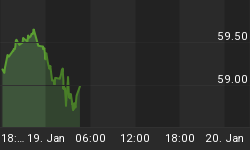1/3/2011 8:52:46 AM
All the major indexes end in trading states with any gains reported on anemic volume. Is this a top?
Recommendation:
Take no action.
Daily Trend Indications:

- Positions indicated as Green are Long positions and those indicated as Red are short positions.
- The State of the Market is used to determine how you should trade. A trending market can ignore support and resistance levels and maintain its direction longer than most traders think it will.
- The BIAS is used to determine how aggressive or defensive you should be with a position. If the BIAS is Bullish but the market is in a Trading state, you might enter a short trade to take advantage of a reversal off of resistance. The BIAS tells you to exit that trade on "weaker" signals than you might otherwise trade on as the market is predisposed to move in the direction of BIAS.
- At Risk is generally neutral represented by "-". When it is "Bullish" or "Bearish" it warns of a potential change in the BIAS.
- The Moving Averages are noted as they are important signposts used by the Chartists community in determining the relative health of the markets.
Current ETF positions are:
In cash.
Daily Trading Action
The major index ETFs opened lower and all dove lower but the NASDAQ-100 was more extreme in its sell-off and bounced after less than fifteen minutes. The Dow and S&P-500 took more like a half hour to find a bottom and then both moved up until they found a top during the lunch hour. The NASDAQ-100 didn't sell off much during the lunch hour and proceeded to move steadily but slowly higher though the session. Both the Down and the S&P-500 explored downside a bit more aggressively but both managed to find themselves in an uptrend the rest of the afternoon. The Russell-2000 (IWM 78.24 -0.52) fell nearly two thirds of one percent. The Semiconductor Index (SOX 411.82 -0.48) eased about a tenth of one percent. All three major indexes, the Russell-2000, and the Semiconductors finished in trading states. The Bank Index (KBE 25.91 -0.02) closed nearly unchanged while the Regional Bank Index (KRE 26.45 -0.30) lost more than one percent. Both remain in uptrend states. The 20+ Yr Bonds (TLT 94.12 +1.03) added more than one percent breaking above its 20-Day Moving Average (DMA) and above horizontal resistance. NYSE volume was anemic with just 506M shares traded. NASDAQ volume was also anemic with 1.015B shares traded.
There were no economic reports of interest released. The U.S. dollar closed down nearly one percent.
Consumer Staples, Energy, and Utilities were unchanged while Telecoms (+0.3%), Financials (+0.2%), Materials (+0.1%), and Industrials (+0.1%) managed feeble gains. That left Tech (-0.2%), Consumer Discretionary (-0.2%), and Healthcare (-0.1%) all moving lower on the last trading day of 2010.
Implied volatility for the S&P-500 (VIX 17.75 +0.23) rose more than one percent and the implied volatility for the NASDAQ-100 (VXN 19.48 +0.82) gained four percent.
The yield for the 10-year note fell six basis points to close at 3.31. The price of the near term futures contract for a barrel of crude oil rose $1.54 to close at $91.38.
Market internals were mixed with advancers leading decliners 6:5 on the NYSE while decliners led advancers 7:4 on the NASDAQ. Up volume led down volume by nearly 5:4 on the NYSE while down volume led up volume by a bit more than 5:4 on the NASDAQ. The index put/call ratio rose 0.44 to close at 1.41. The equity put/call ratio rose 0.21 to close at 0.73.
Commentary:
Friday saw another day of anemic volume as many traders have taken the week off. The major indexes didn't experience a large sell-off into the close. That action was limited to the Russell-2000 as some players took off the risk trade to close out the year. With all the major indexes in trading states, and those being echoed by the Russell-2000 and Semiconductors, caution is warranted.
For the equity indexes we monitor, only the Semiconductors Index closed below its 20-DMA but the NASDAQ-100 closed at this important level. An inverse corollary to that was the move by TLT (20+ year bonds) which broke above its 20-DMA. We would expect the major indexes to make a final move higher in the coming week with a confirmed reversal coming, at which time we intend to short the major indexes and perhaps other securities as well. If the market opens significantly higher, say above the upper Bollinger Bands and closes within the upper Bollinger Bands (this is on the daily charts), we would consider that a move worth shorting the major indexes, assuming the major indexes remain in a trading state. We continue to patiently (or impatiently) wait for a tradable top and will enter short positions when we see it.
We hope you have enjoyed this edition of the McMillan portfolio. You may send comments to mark@stockbarometer.com.
















